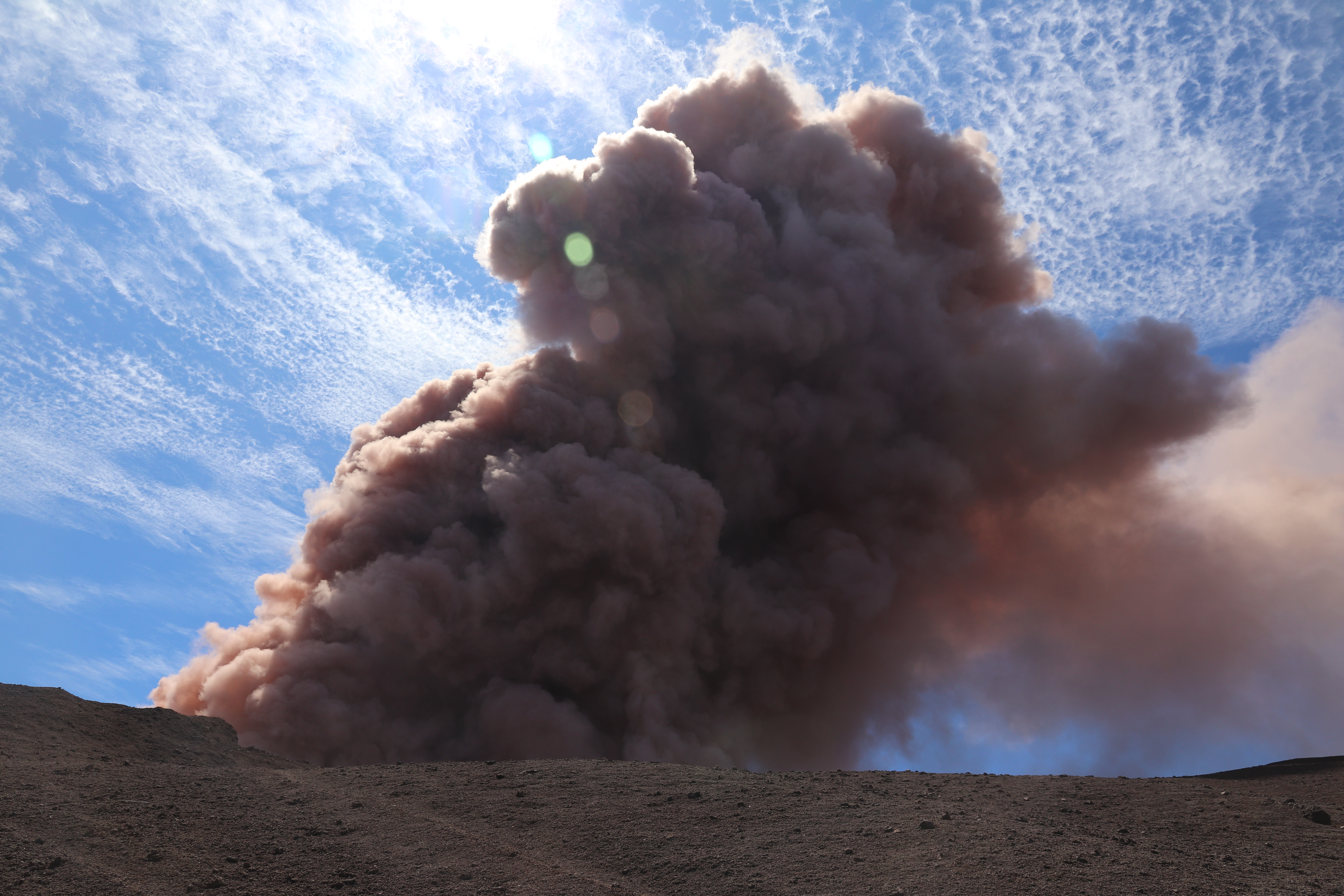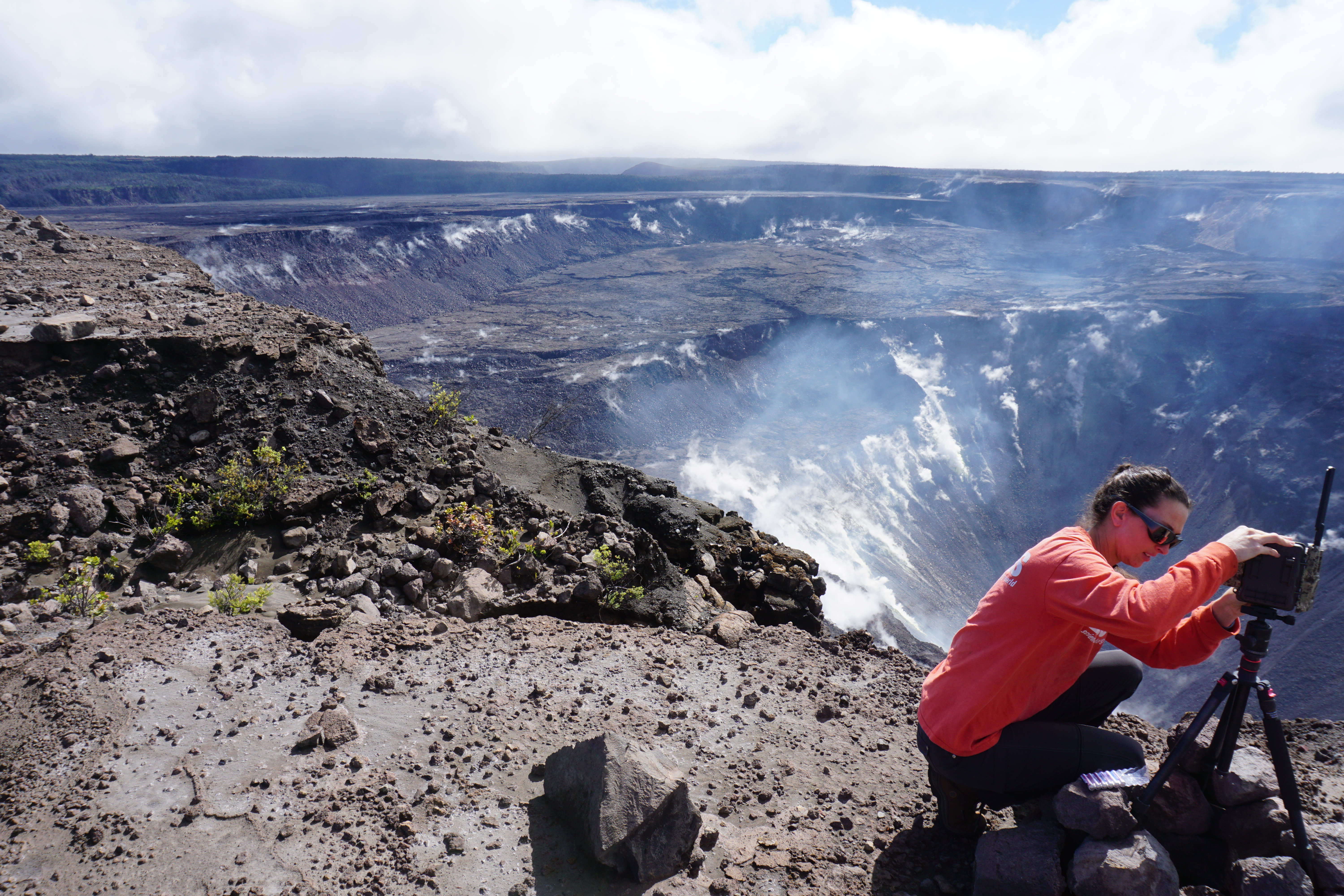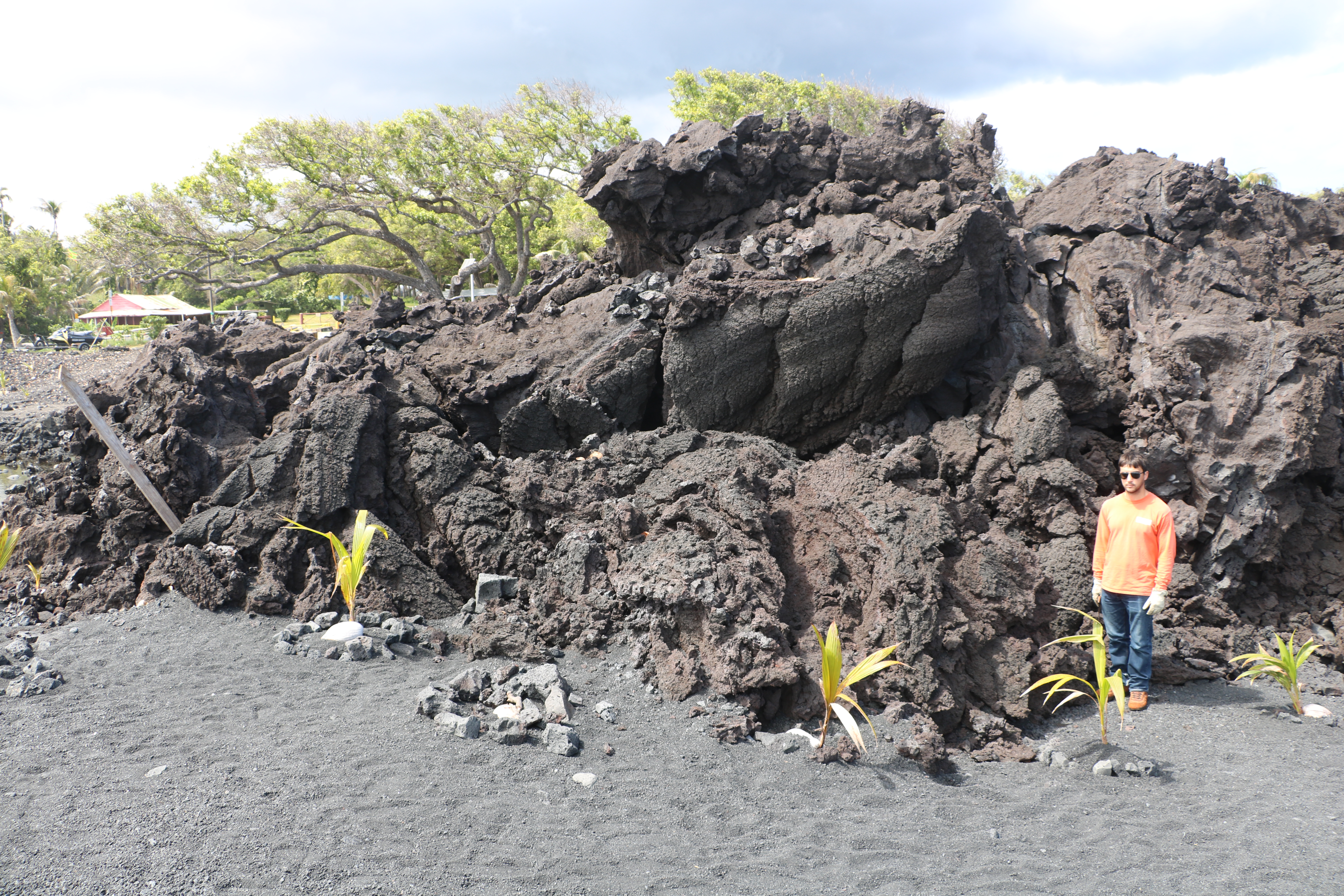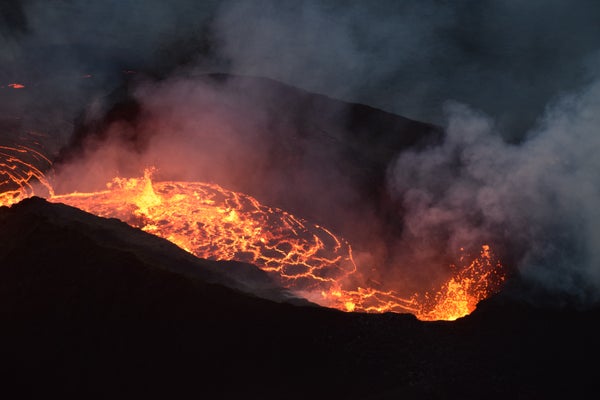This article was published in Scientific American’s former blog network and reflects the views of the author, not necessarily those of Scientific American
Can you believe it's been an entire year since Kilauea's Leilani Estates eruption began? There's been such incredible change on the volcano since that first fissure opened and began to fitfully toss spatters of lava into the air. Back then, a lava lake had churned within Halema'uma'u for the better part of a decade and showed few signs of letting up. Pu'u Ō'ō, born just after the new year in 1983, had celebrated its 35th birthday still vigorously erupting, but abruptly collapsed on April 30th and was feared dead. No one was quite sure what would happen next, or how long the eruption would last.
In the end, the lava stopped flowing after about three months. Three and a half kilometers of new land expanded the coastline. Entire neighborhoods, including a lovely bay, lay beneath steaming lava flows. And for the first time in almost 36 years, Kilauea completely stopped erupting. There hasn't been any new lava since August of last year. It's rather jarring to check on the volcano's status and see "Current Volcano Alert Level: NORMAL."
Kilauea may be snoozing now, but that doesn't mean it's taking more than a brief nap. It will certainly erupt again soon, possibly within months. But while it's quiet, let's take a look back at last year's captivating eruption and catch up on what's been happening since.
On supporting science journalism
If you're enjoying this article, consider supporting our award-winning journalism by subscribing. By purchasing a subscription you are helping to ensure the future of impactful stories about the discoveries and ideas shaping our world today.

A plume of pink ash billows from Pu'u Ō'ō after an earthquake and collapse with the crater on May 3rd, 2018. Credit: USGS
Rosetta Stones: As the Eruption Unfolded
Kilauea Erupts Fountains of Fire in Leilani Estates
Things got incredibly exciting in Hawaii over the last week. Kilauea's East Rift Zone showed an abrupt uptick in seismic activity on Monday afternoon, showing that magma was on the move. No one knew if it would actually erupt; magma often goes traveling without showing up on the surface, and this was in an area that hadn't seen activity in the past. But everyone was on high alert – especially when cracks began to appear in one of the Big Island's newest subdivisions.
Leilani Estates Eruption: No End in Sight
Things remain pretty heated in Hawaii. The Leilani Estates eruption continues apace, at least thirty-five homes have been destroyed, and there's no sign the lava will stop any time soon. What comes next, no one knows for sure; but judging from the ongoing seismic activity in the area, and the continued opening of new fissures, it looks like the eruption certainly won't be ending this week.
Evacuating Volcano Country: Begin Your Preparations Today
Volcanoes typically give warning before they erupt, but that warning may only be hours. You could be left with little or no time to prepare. May is Volcano Awareness Month in Washington State, and with the Kilauea eruption in Leilani Estates causing more evacuations, now is an excellent time for us all to find out if we're living in or visiting volcano country. If so, it's time to prepare
The Lowdown on LAZE: Kilauea's Most Recent Hazard
Kilauea's most recent lava flows reached the sea over the weekend, and they've been beach bumming ever since. Few things are as dramatic as molten rock contending with seawater. We'll be talking about all the neato things that are happening and that we may see if the eruption continues. We're starting with LAZE, which in this case isn't something you do on a hot summer afternoon.
I Regret to Inform You: Kilauea Rumors Aren't At All True
The eruption on Kilauea volcano has settled into a routine, with one fissure pumping lava in a fiery river that runs to the sea, creating new land. It's a pattern that has repeated on the Hawaiian islands for millions of years. Unfortunately, there's another pattern repeating: people seeing a rather calm and perfectly ordinary volcano doing what shield volcanoes do, and thinking the entire island's about to blow. An eye-rolling number of doomsday predictions have been made since the eruption shifted to the Leilani Estates/Vacationland area.
I regret to inform you: none of them are true. Not even a little bit.
Kilauea Produces a Stunning Lava Whirl!
You know what's better than a fireworks show? A dust devil made of lava. You've got to put down whatever you're doing and watch this, because it is spectacular...
Lava Boat Bombed by Kilauea and Other Volcanic News
For a while, there, Kilauea settled into a predictable routine, and there wasn't much news surrounding the eruption. The most exciting and terrible thing was the lava channel developing a kink and the flow covering more structures and a park; otherwise, you could pretty much depend on the news being pretty much the same every day. But this past week has seen one quite dramatic event, plus a couple of awesome ones if you're a volcano geek.
Kilauea's been almost as quiet as this blog for the past few weeks! Summit collapses have paused, earthquakes are down to just the occasional rumble, and SO2 emissions are the lowest they've been since 2007. Most notably, the spectacular Fissure 8 has gone completely still. All that remains of the robust lava river is a small crusting pond deep within the snazzy new spatter cone.
Has Pele ceased her remodeling, or is she just taking a nice break before continuing?
The Apex and the (Possible) End of Fissure 8
The situation turned on a dime on August 4th. That morning, the Fissure 8 channel was active and incandescent, even adjusting its path, overflowing here and there, and starting more fires. By the late afternoon, the fountains were pumping considerably less lava. By the following morning, the output had become significantly lower, and the channel already crusted over from the spillway at the mouth of the cone all the way down its considerable length. Instead of flowing, lava now merely oozed. On the 6th, observers reported that the once mighty fountains now merely bubbled a bit within the crater of the cone. Lava had drained from the upper channel and crusted completely over down-channel. Over the next couple of weeks, even the bubbling stopped; the lava ponds within the crater have formed thick dark crusts, and after the pause stretched beyond two weeks, it seemed the eruption may be over.
Kilauea Isn't Erupting (at the moment), but the Science Goes On

A USGS geologist changes a battery in a Halema‘uma‘u web cam. Credit: USGS
Kilauea's been quiet since August, but here's the thing about volcanic eruptions: the science doesn't end when the lava stops flowing. While it's going on, events are happening too fast to process on more than a superficial level. The amounts of data being generated are staggering. Volcanologists are scrambling to merely collect it, and as far as interpreting it, most of the in-depth stuff has to wait until the volcano goes sleepy-bye. The eruption generally doesn't give anyone a chance to do more than the most superficial analysis when it's sudden and constantly evolving.
Since the Eruption: The Science Never Ceases
7 months of no lava at Pu‘u ‘Ō‘ō heralds end of an era.
The catastrophic collapse of Pu‘u ‘Ō‘ō has left the iconic eruption site and surrounding lava flow fields devoid of lava through the rest of 2018. December 30th marked the seven month anniversary of no surface activity at Pu‘u ‘Ō‘ō and is effectively a concluding milestone for this long-lived event.
How do lava flows cool and how long does it take?
Since the end of the 2018 lower East Rift Zone (LERZ) eruption on Kīlauea Volcano, questions have surfaced concerning how long it will take for the new lava flows to solidify. This is a difficult question to answer, because the initial eruptive temperatures along with many different factors can influence the rate of cooling.
Did groundwater trigger explosive eruptions at Kīlauea?
But, while moderate explosions and associated ash plumes did occur in 2018, major explosions like those of 1924 did not. Why not? Was groundwater to blame, or was it something else?
There is much more to the story.
New outcrops make good geology
A good field geologist is an opportunist. Never content with what outcrops are available, she jumps at the chance to see another one, hoping that it will provide a better understanding to some question about what happened in the past. But it isn't every day that new outcrops are created, and rarer still when they are on the scale of those formed during the faulting of Kīlauea Volcano's caldera floor in summer 2018.
What caused—or did not cause—the 2018 Kīlauea eruption?
The USGS Hawaiian Volcano Observatory has received several inquiries about the cause of Kīlauea Volcano's 2018 lower East Rift Zone eruption. Specifically, we've been asked if the eruption was caused by or related to geothermal drilling and energy production on Kīlauea's East Rift Zone.
The short answer is "no"—there is no credible model that connects geothermal operations to Kīlauea's 2018 eruption. We'll explain by starting with some facts about the volcano...
What we've learned from Kīlauea's 2018 lower East Rift Zone eruption
The lower East Rift Zone eruption, as well as the 2018 summit collapses, are providing many new insights on Kīlauea. This week's Volcano Watch focuses on a few aspects of the lower East Rift Zone eruption that are helping us better understand volcanic hazards in Hawaii.
HVO geologists recall their first day of the 2018 lower East Rift Zone eruption

A geologist poses in front of a massive lava flow at Isaac Hale Beach Park on March 29, 2018. This is a lovely example of "toothpaste lava" with many squeeze-up features. Credit: USGS
With the one-year anniversary of the onset of Kīlauea Volcano's 2018 lower East Rift Zone eruption upon us, USGS Hawaiian Volcano Observatory (HVO) staff, like many Hawai‘i residents, are reflecting on this historic event.
